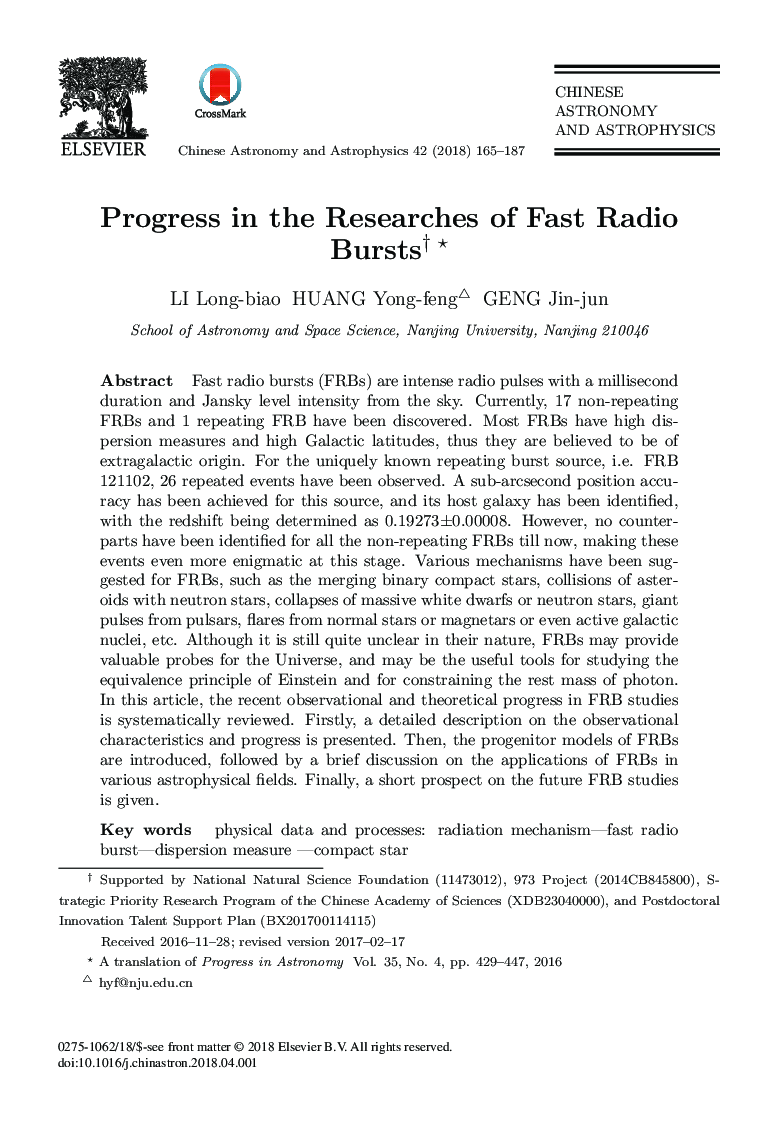| Article ID | Journal | Published Year | Pages | File Type |
|---|---|---|---|---|
| 8133103 | Chinese Astronomy and Astrophysics | 2018 | 23 Pages |
Abstract
Fast radio bursts (FRBs) are intense radio pulses with a millisecond duration and Jansky level intensity from the sky. Currently, 17 non-repeating FRBs and 1 repeating FRB have been discovered. Most FRBs have high dispersion measures and high Galactic latitudes, thus they are believed to be of extragalactic origin. For the uniquely known repeating burst source, i.e. FRB 121102, 26 repeated events have been observed. A sub-arcsecond position accuracy has been achieved for this source, and its host galaxy has been identified, with the redshift being determined as 0.19273±0.00008. However, no counterparts have been identified for all the non-repeating FRBs till now, making these events even more enigmatic at this stage. Various mechanisms have been suggested for FRBs, such as the merging binary compact stars, collisions of asteroids with neutron stars, collapses of massive white dwarfs or neutron stars, giant pulses from pulsars, flares from normal stars or magnetars or even active galactic nuclei, etc. Although it is still quite unclear in their nature, FRBs may provide valuable probes for the Universe, and may be the useful tools for studying the equivalence principle of Einstein and for constraining the rest mass of photon. In this article, the recent observational and theoretical progress in FRB studies is systematically reviewed. Firstly, a detailed description on the observational characteristics and progress is presented. Then, the progenitor models of FRBs are introduced, followed by a brief discussion on the applications of FRBs in various astrophysical fields. Finally, a short prospect on the future FRB studies is given.
Related Topics
Physical Sciences and Engineering
Physics and Astronomy
Astronomy and Astrophysics
Authors
LI Long-biao, HUANG Yong-feng, GENG Jin-jun,
